What is the correct left hand position on guitar?
Technique is an important part of playing any musical instrument. Today, I would like to talk about the correct left hand position on guitar. See here for the best right hand position on guitar.
While the exact positioning of each players hand might vary slightly because each player and each instrument are slightly different in size, the proper left hand position will follow the four rules of efficient musculoskeletal function. I highly recommend you read this article first, before continuing here.
It is important to have a qualified guitar teacher to help you with these fine details of positioning.
The principles of a good left hand position
The following rules above describe the optimal left hand position. Because of the demands of left hand playing, it is not always possible to stay in this position.
You may leave this position to make a stretch or play a difficult chord or barre, but the you should return to this optimal position as soon as is possible.
The left wrist
The left wrist should be kept straight. It should have minimal deviation and arch, none if possible. It should have no more than 10 degrees of arch, 20 degrees at the absolute maximum. In other words, it should be relatively straight.
The fingers
The left hand fingers should be positioned so that all of the joints in the fingers are curved and in the middle of their range of motion. This satisfies the requirement of midrange function of joints. It will allow you to move most freely, and give you the most strength when pressing a string.
Left wrist tilt (or rotation)
The left hand wrist is rotated so that the pinky side of the hand is slightly closer than the index side of the hand to the fretboard.
Base knuckles
The large base knuckles of the finger are positioned on the side of the fretboard opposite the player. This allows for the most strength and power. It also helps your fingers press directly down on a string without touching the others.
The thumb
The left hand thumb should be open and relaxed. It should not come over the top of the guitar’s neck, and it should not behind the fingers. Instead it should be slightly to the left of the fingers, to the outside. I know you probably have the tendency to want to squeeze with your thumb. If you get counterpressure from the back muscles instead, you'll move more freely in the fingers, and you'll never ever get one of those annoying thumb cramps.
Images of poor left hand positioning
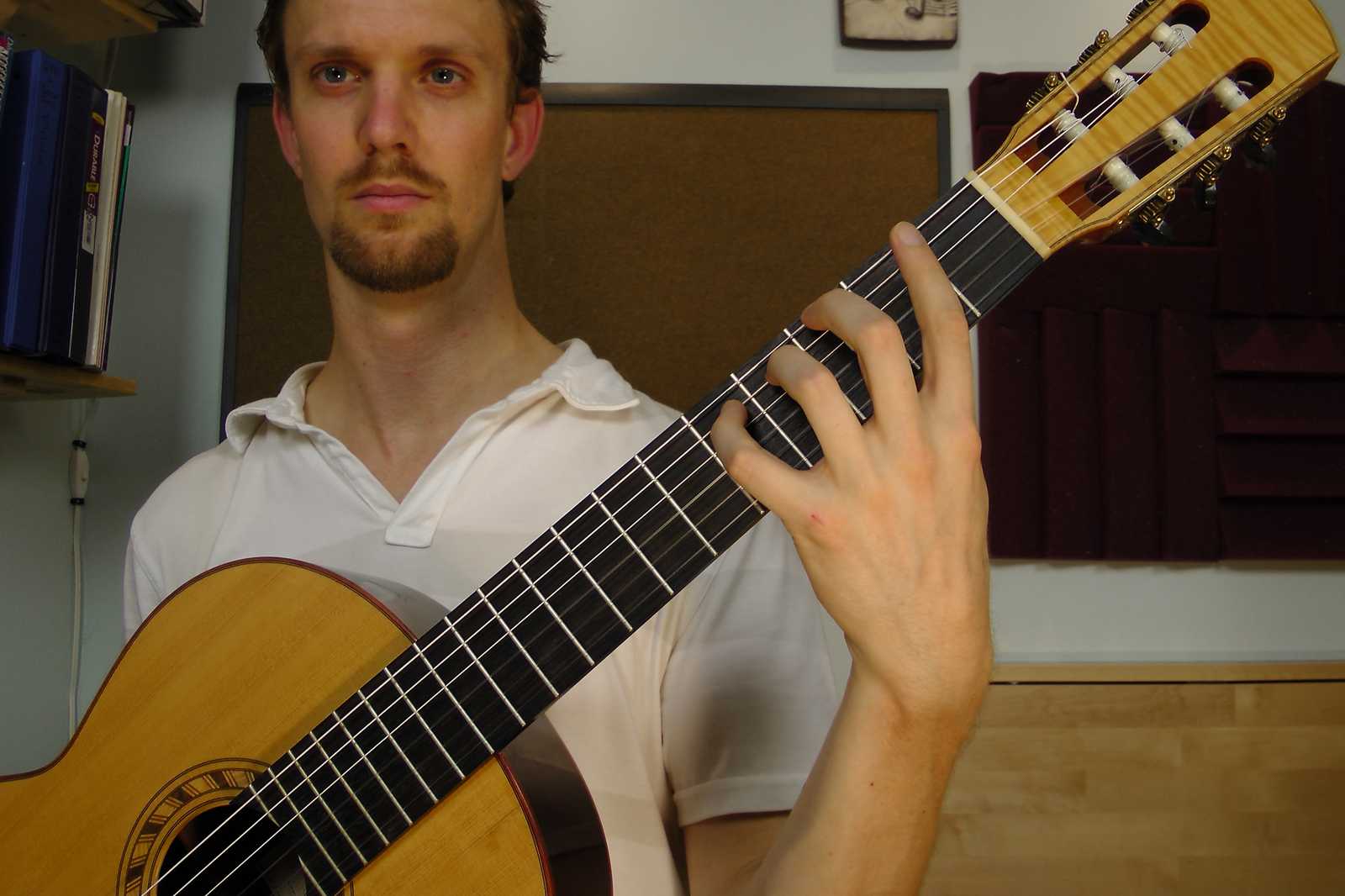
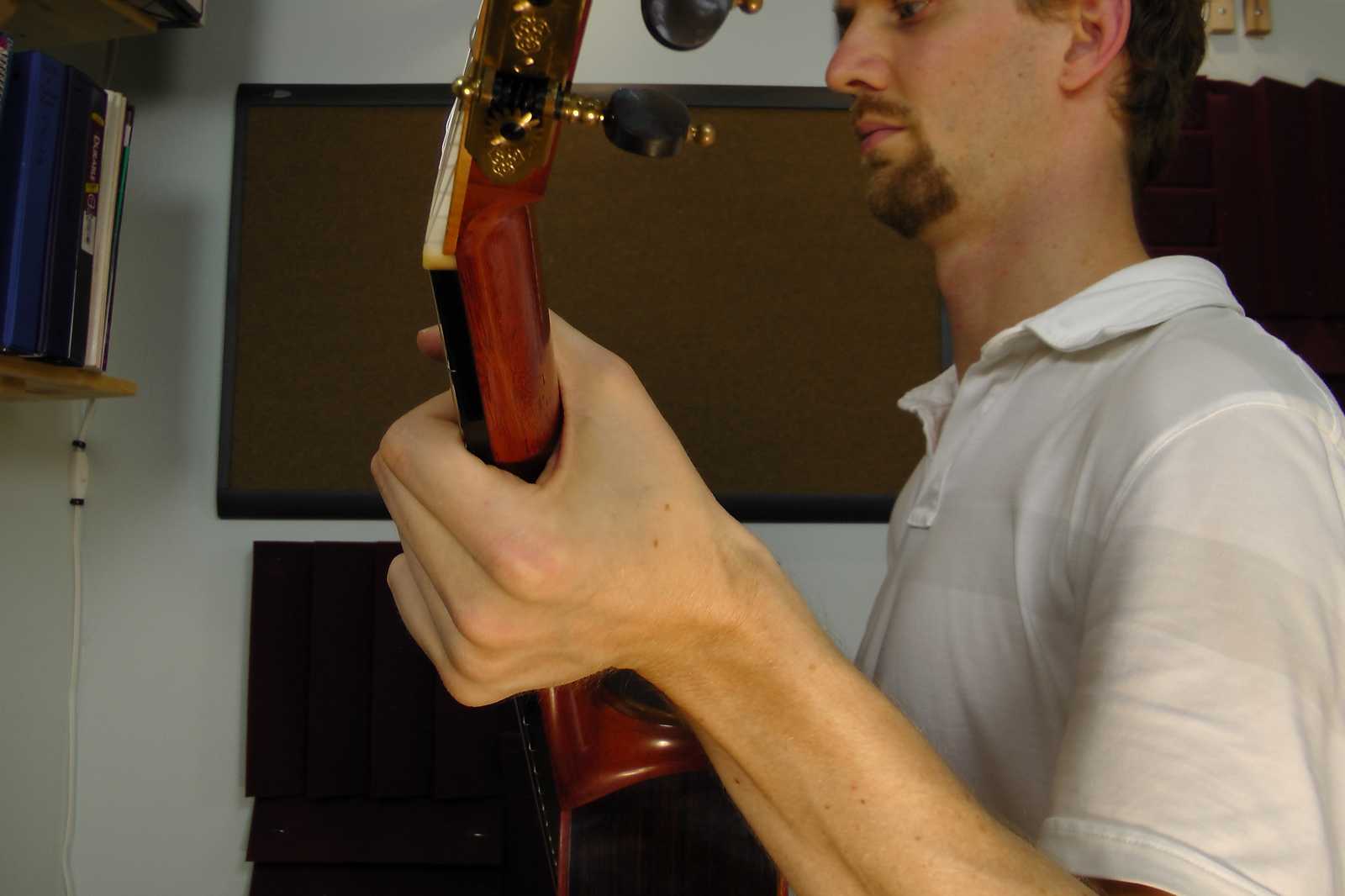
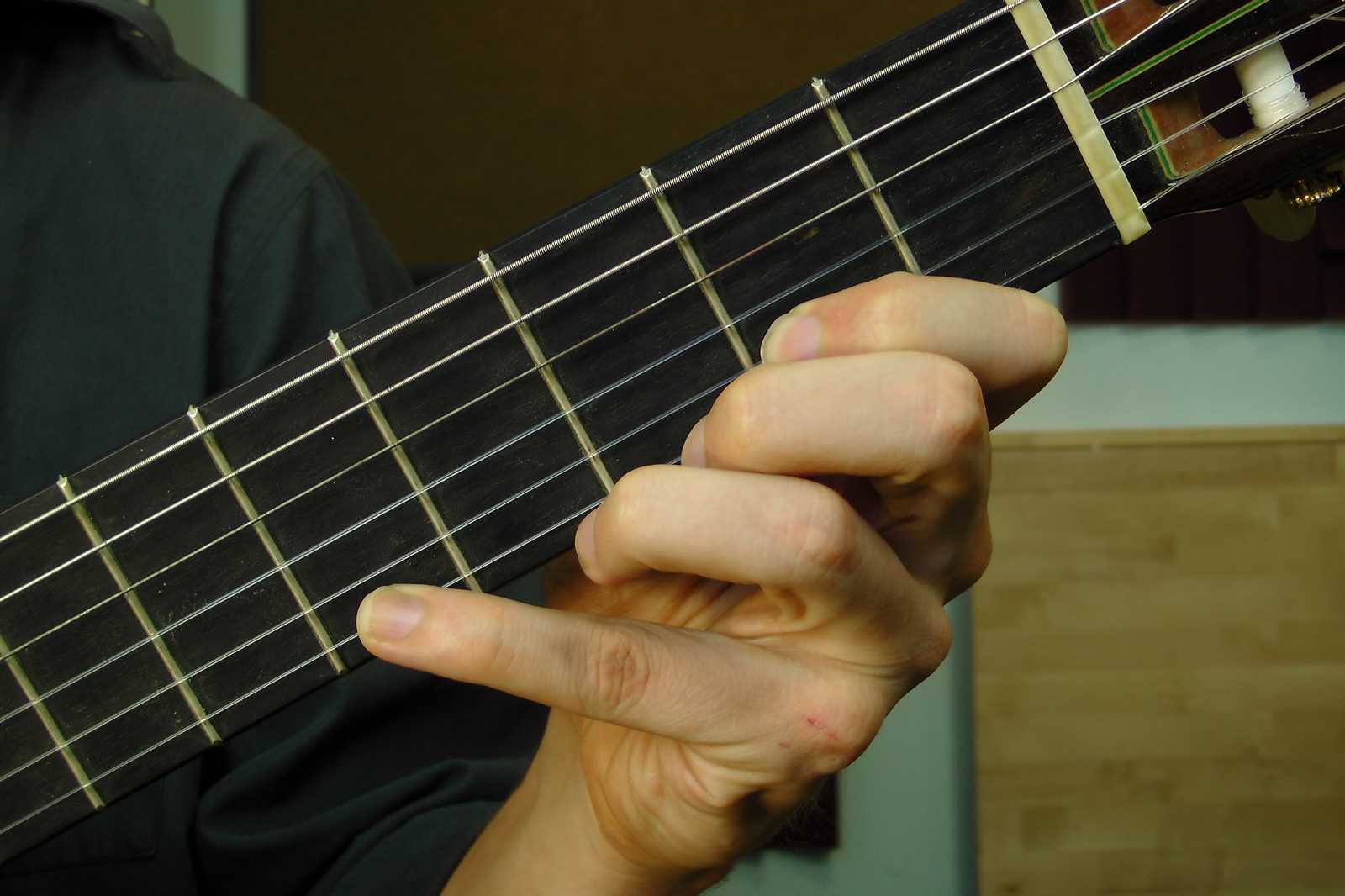
Images of good left hand positioning on the guitar
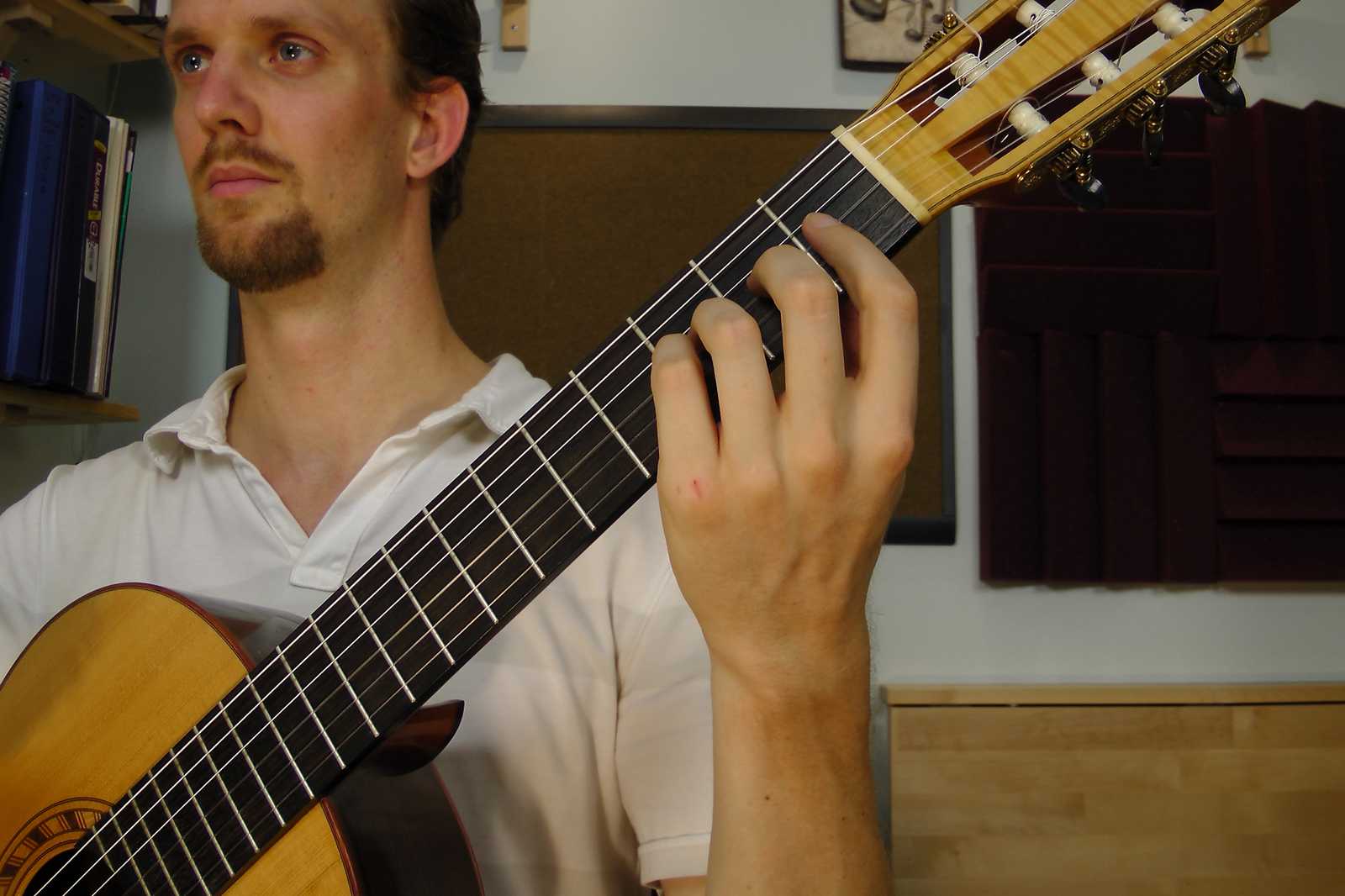
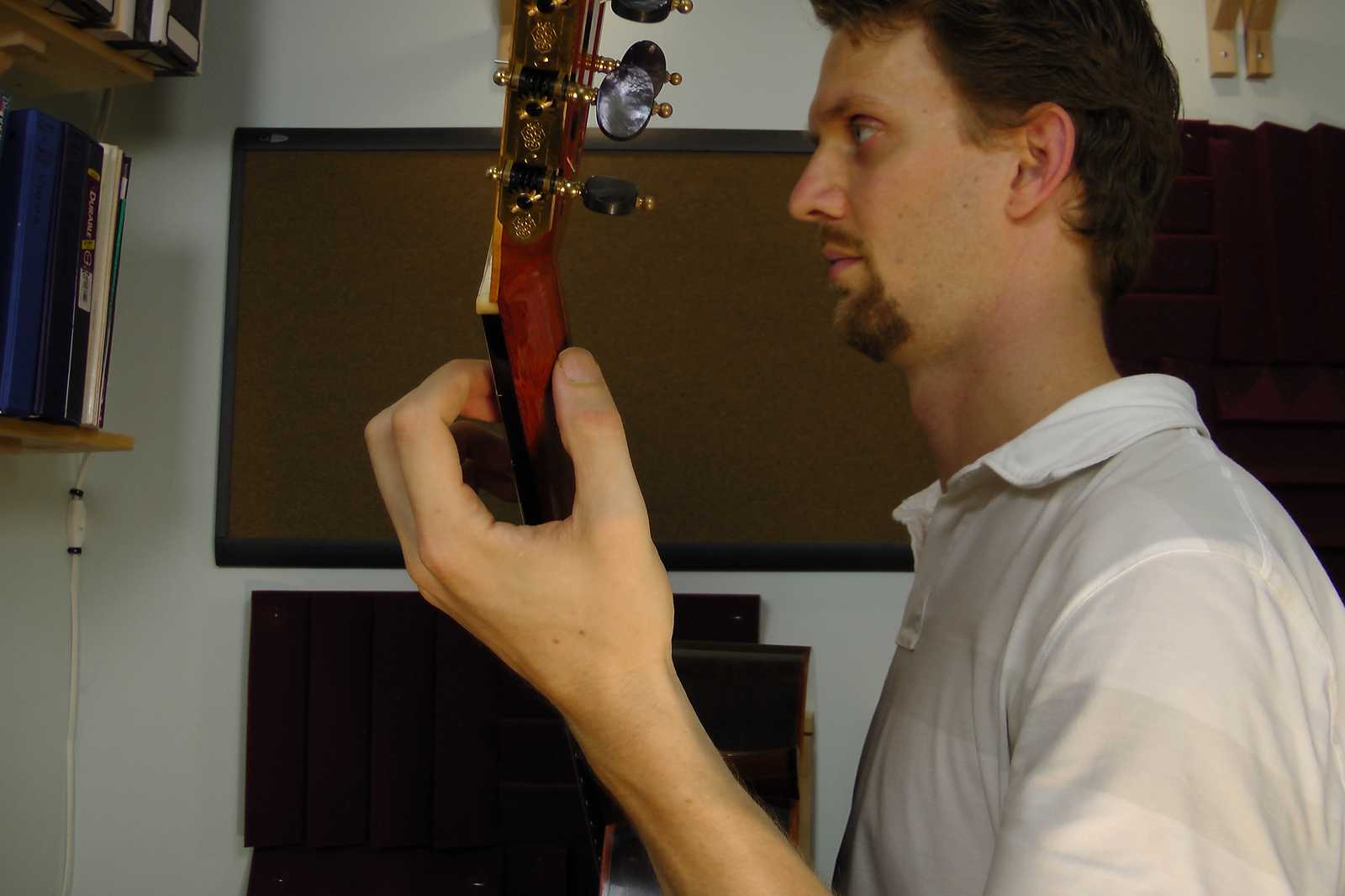
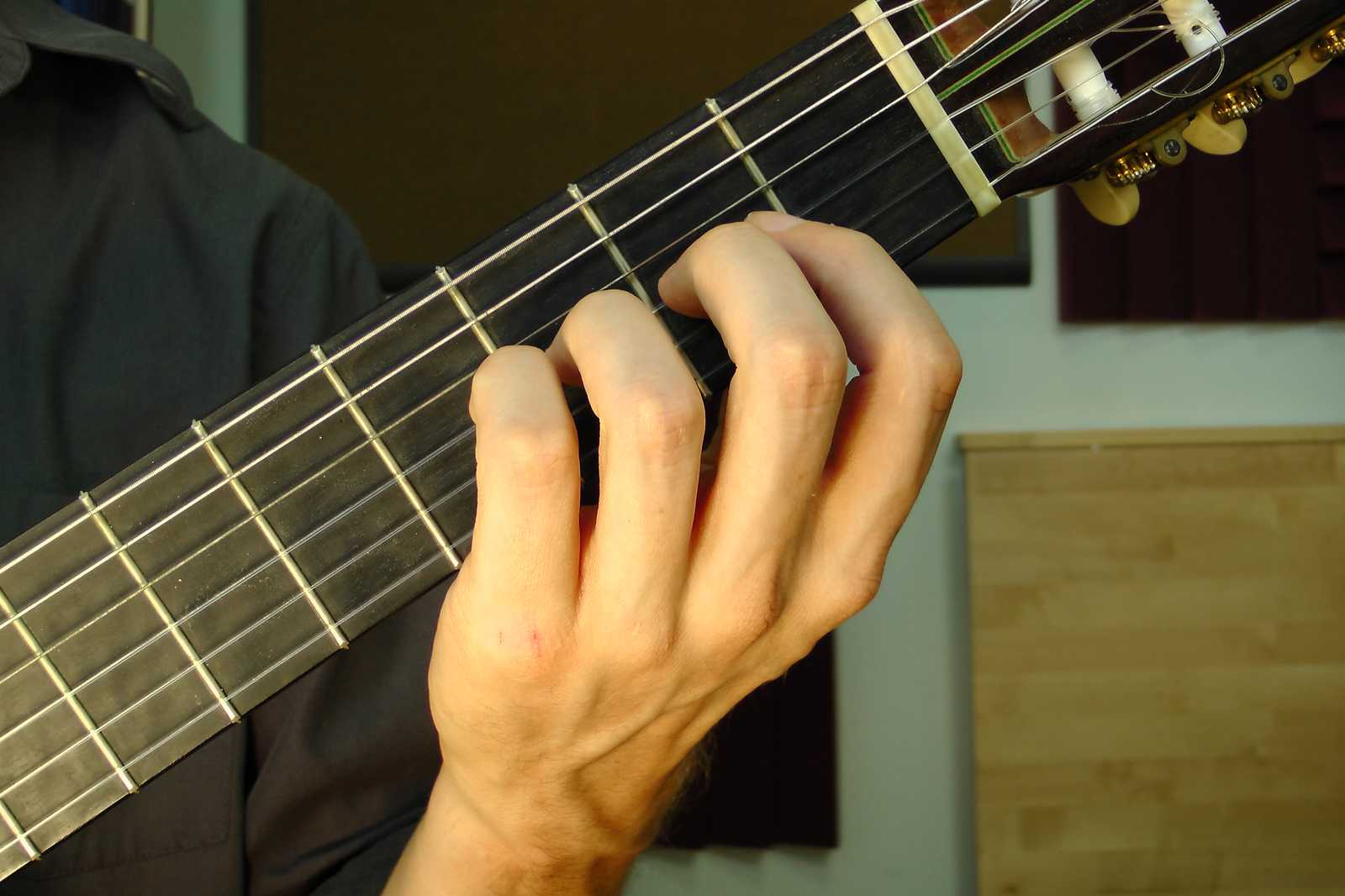
Conclusion
If you follow the rules above, you'll have a strong, flexible left hand technique. And if you read all about the guitar's right hand position, you'll quickly realize that the rules for the left hand are exactly the same as the rules for the right hand: aligned wrists, fingers curved, thumb open, etc. It's simply because good function is good function no matter where you apply it.
If you are looking for some personalized help with your left hand position, we'd be happy to help you with guitar lessons in San Antonio, New York, or online.
Related



